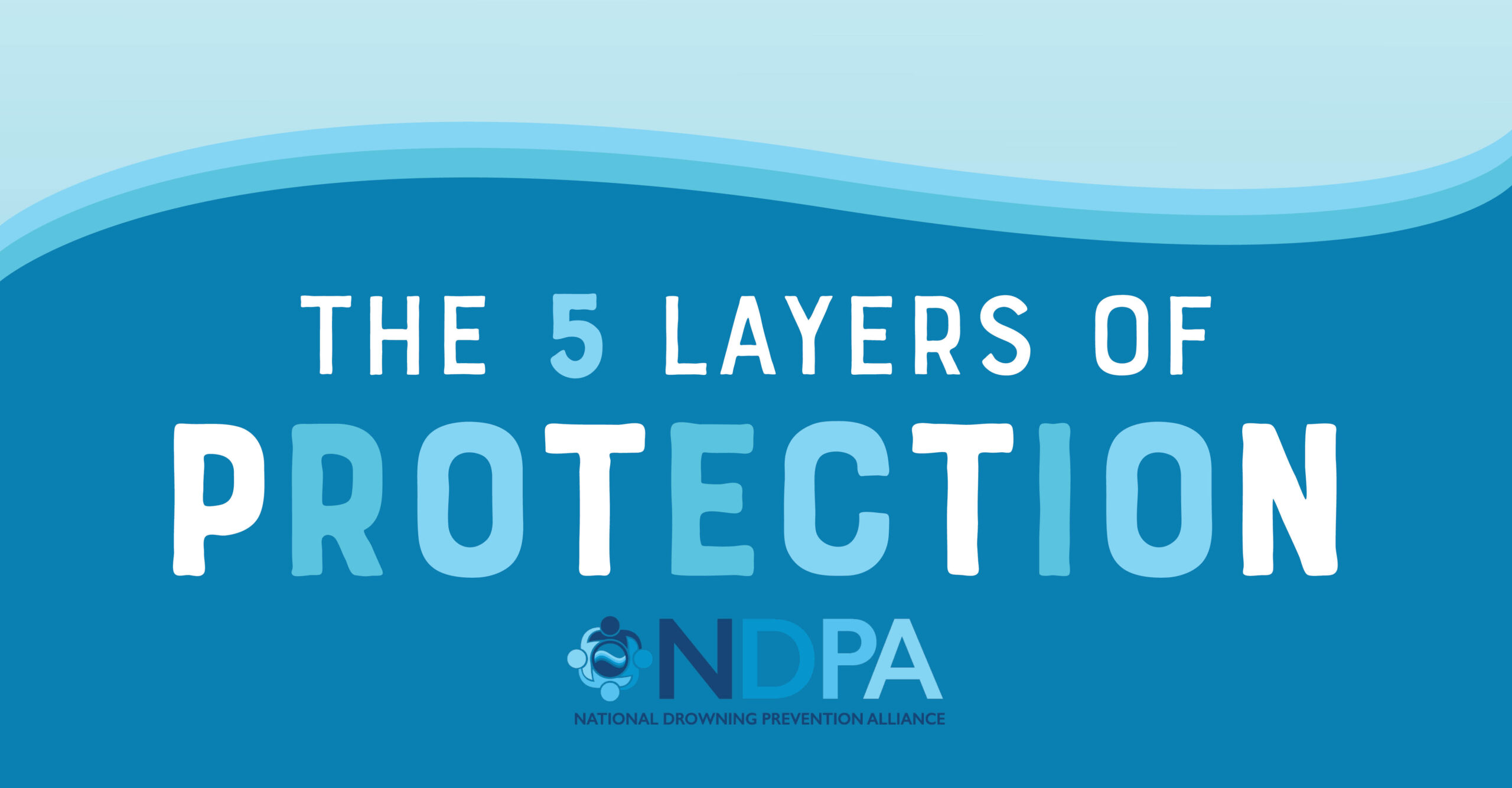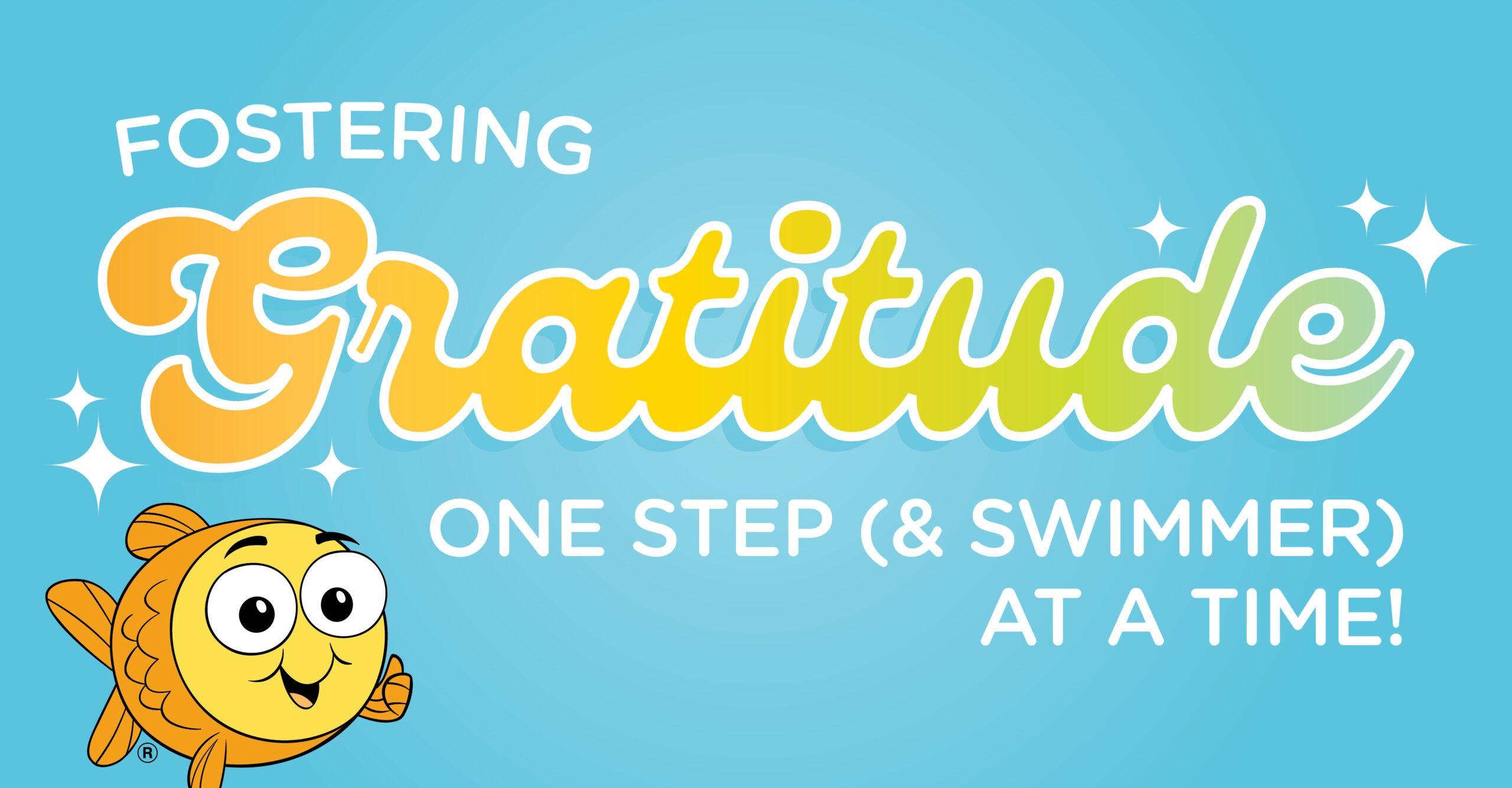Your GOLDEN Guide to NDPA’s Drowning Prevention Strategy

The National Drowning Prevention Alliance’s 5 Layers of Protection to Help Protect Kids in the Water
As parents, we always want what’s best for our kiddos. You read all of the books before they even arrive, you research the safest strollers and car seats, and, of course, you sign them up for swim lessons.
Unfortunately, drowning rates are on the rise for the first time in decades, and it remains THE leading cause of death for children 1 to 4. While swim lessons are a fintastic drowning prevention tool – reducing the risk of drowning by up to 88%! – it’s not the only barrier to keep in mind when it comes to helping your kiddos be safer in and around the water.
Our team at Goldfish Swim School has partnered with the National Drowning Prevention Alliance (NDPA) in our mission to reduce these startling statistics. The NDPA stresses the 5 Layers of Protection, providing parents and caregivers with a drowning prevention strategy that covers all the bases.

1. Barriers & Alarms
The first layer of drowning prevention consists of barriers that limit access and alarms that alert you if your child is trying to access the water when they shouldn’t. Believe it or not, 70% of drownings among young children happen during non-swim times, making this layer all the more necessary.
When it comes to fences, 4-sided isolation fencing is ideal! You want a barrier that restricts not only access from your home for your kiddos, but also restricts access for neighborhood children as well! The height of your fence may depend on your local requirements, but it should be made of a material and built tall enough that it cannot be easily climbed. You also want to ensure that all gates, regardless of permanent or temporary fencing, are self-closing AND self-latching.
A barrier we don’t often think about? Pool covers! Safety covers should meet the industry standards and be maintained on a regular basis. This includes clearing any rain water, and keeping kiddos and pets off.
The final barrier that is crucial to water safety – alarms! Whether you add them to windows, doors or gates, you can never have too many alerts for someone heading to the backyard or the pool deck. To take it up a notch, consider pool surface alarms! These special systems are installed on the pool wall or below the surface, and are designed to sound an alarm immediately when the pool is entered (and resets after a swim sesh!).

2. Supervision
Just because you and other family members or friends are around the pool doesn’t mean that the kiddos are being actively watched. In fact, 88% of child drownings occur with at least one adult present.
As part of a full drowning prevention strategy, it’s vital to maintain constant and consistent supervision when around the water, even if the kids aren’t actively swimming. The NDPA recommends “touch supervision,” meaning that an adult should be within arms’ length of infants, toddlers and children whenever they are in or around the water.
While many of our favorite water-focused destinations have a lifeguard on duty, it’s important to know that they are not a substitute for parental supervision. After all, they have more than just a few kids on their radar! Whether you’re at the pool, beach or just in your backyard, the best thing you could do is designate a Safer Swimmer Guard! This adult will be responsible for keeping an eye on the kids (both in and around the water!) free of distractions – no phone, no books, no chit chat.

3. Water Competency – i.e. Swim Lessons!
It wouldn’t be a true water safety conversation if we weren’t discussing swim lessons! We’re firm believers that it’s never too late or too early to learn how to swim. In fact, the American Academy of Pediatrics recommends swim lessons for kiddos starting as early as one!
In order to develop and maintain their water competency, it’s important for kiddos to take swim lessons consistently throughout the year – not just right before vacay! After all, practice makes progress – the muscle memory is built up year-round within lessons so that kiddos instinctively know what to do when they need it most.

4. Life Jackets
No matter the destination or a child’s swimming ability, life jackets are essential! If all else fails, life jackets can help to prevent unintentional drowning.
Coast Guard-approved life jackets, when fitted properly and worn before entering the water, act as a critical layer of protection. With multiple secure buckles and extensive testing prior to approval, these flotation devices keep kiddos snug and secure while also allowing full range of motion!
Unfortunately, not all flotation devices are made equally. Inner tubes, water wings and other floaties have not been Coast Guard tested or approved, and thus cannot be considered a safe layer of protection or a substitute for a Coast Guard-approved life jacket.

5. Emergency Preparation
Emergencies are unexpected and can happen in an instant. Knowing what to do can truly be a lifesaver!
While cell phones are everywhere, it’s important to check your location for a landline near the water. These phones will allow the operator to determine your location even if you didn’t have time to memorize it!
When checking your location for an emergency phone, keep an eye out for rescue equipment as well! Rescue equipment bags, life preservers, and first aid kits are all valuable resources that are sure to come in handy in case of an emergency.
Alongside proper equipment should be proper training – learning and refreshing CPR skills is vital! Babysitters, caregivers, and parents should maintain a CPR certification so they can be as prepared as possible when it matters most.
Above all, if a child is missing – check the water first! In an emergency, every second matters, so if you cannot find the child immediately, call 9-1-1 and recruit others to assist in the search.
Water Safety for Drowning Prevention
Remember: drowning happens quickly and silently. Each layer alone cannot prevent a tragedy, but together they can save a life. To learn more about water safety measures and drowning prevention, download your free checklists and visit our friends at the NDPA.



